

Low -temperature line specification
Low -temperature line characteristics
It is used to minimize the heat leak to the sensor and the low -temperature system. The low temperature line has a much lower thermal conductivity (and higher resistivity) than the copper wire. The most common low -temperature wire material is phosphorus copper. This kind of wire has a single, two, and four quotes configuration. The four quotes are configured with Quad-Twist ™ (two twisted lines) or Quad-Lead ™. The line is 32 or 36.wg, and the insulation wires are used with polytamine or polyvinyl alcohol to shrink formaldehyde. Other common low-temperature lines include manganese, nickel-chromium alloy heating lines and HD-30 heavy copper wires.
Single-stock low-temperature line-WSL-32, WSL-36
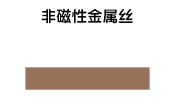
Single -shares low -temperature line characteristics
● Phosphorus copper wire
● Non -iron magnetic
● Single stock
● 32 and 36 AWG
● Polybamine insulation (WSL-32)
● Formvar® insulation material, transparent (WSL-36)
Non -magnetic (NM) single quotation line (SL) line is phosphorus bronze (CUSNP alloy) line. The temperature dependence of the resistance of this wire from room temperature to the temperature of the air is relatively low.
WSL-32 can be used for installation of sensors that require stronger and more "strong" lead.
Line WSL-36 is recommended for general sensor installation.
Twisted lines-WCT-34
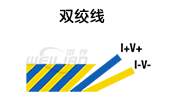
Tiend line characteristics
● Silver -plated copper
● 34 AWG
● TEFLON® insulation material
These low -resistant twisted twisted wires are very suitable for extending the lead length of the low -temperature sensor.
Duo-Twist™ Low -temperature line — WDT-32、WDT-36

Duo-Twist™ Low -temperature line characteristics
● Phosphorus copper wire
● Non -iron magnetic
● Single -pair pair twisted line (2 lines)
● Color coding (cathode green, anodized transparent)
● Minimum picker noise
● 32 and 36 AWG
● Polybamine insulation
Duo-Twist ™ is a single-pair twisted line (2 guide lines) of 32 or 36 AWG phosphorus bronze wires, twisted at 3.15 (8 twist per fir) per centimeter. This wire is a good choice when the inductive current needs to be picked up by the diode sensor or sample to generate noise.
Quad-Lead™ Low -temperature welding wire — WQL-32、WQL-36
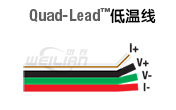
Quad-Lead™ Low -temperature welding wire characteristics
● Phosphorus copper wire
● Non -iron magnetic
● Four -color coding lead
● 32 and 36 AWG
● Polybamine insulation
The Quad-Lead ™ wire is a 4-wire "band-shaped cable". Compared with the use of single wires, it makes the heat dissipation and bandaging of the wire easier. Using the QUAD-Lead ™ wire can be easily made without sensory (dual-wire) winding for radiators and heater. In addition, the wire is coded in color to facilitate the identification of the wires, and it can be divided into 2 pairs of wires. Because of its low magnetic resistance, the Quad-Lead ™ cable can also be used for standard 4 lead measurement in magnetic field applications.
Note: The QUAD-Lead ™ wire is made of "band-shaped cable" with Bond Coat 999 keys. This adhesive will soften above 160 to 180 ° C. You can separate single -rooted wires by heating or using rotating grinding mechanical stripper (recommendation: Eraser company RT2S Magnet Wire Stripper).
Do not use any sharp blade to separate the wires, otherwise it will cause damage.
Quad-Twist™ Low -temperature wire — WQT-32、WQT-36

Quad-Twist™ Low -temperature wire material characteristics
● Phosphorus copper wire
● Non -iron magnetic
● 2 twisted line (4 lines), color coding
● Minimum picker noise
● Polybamine insulation (WQT-32)
● Formvar® insulation material (WQT-36)
Quad-Twist ™ is 2 pairs of twisted twisted lines (4 leads) of 32 or 36 AWG phosphorus bronze wires. Each pair includes 3.15 twisted per centimeter (8 twisted per inch), and 2 pairs are twisted at 1.57 per centimeter (4 twisted per inch). The wire is a good choice when the induction current needs to be picked up through the induction current to the diode sensor or sample. The twisted wire is used to motivate the sensor, and the other twisted wire is used for the output voltage of the sensor to minimize the pickup of electromagnetic noise.
Manganese copper line — WMW-30、WMW-32、WMW-36
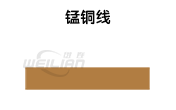
Characteristic
● Named 83% copper, 13% manganese and 4% nickel
● Non -iron magnetic
● 30, 32 and 36 AWG
● Heavy Formvar® insulation material
Manganese copper wires are usually used for low -temperature constant temperature temperature temperature device wiring or heater requirements in non -magnetic applications.
Heavy -duty leader — WHD-30

High -type leading characteristics
●30 AWG
●7 38 AWG silver -plated twisted copper twisted lines
●Black etching Teflon® Used to bond with epoxy resin
This stronger wire can be used as a leader in a low -temperature heating heater in a low -temperature environment that requires or requires a low -resistance heater.
Nickel chromium alloy heating wire — WNC-32
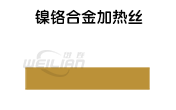
Nickel chromium alloys heating silk characteristics
● Name 80% nickel, 20% chromium
● Non -iron magnetic
● 32 AWG
● Polybamine insulation
This high -resistance line is usually used for heater requirements. The relatively large wire size provides sufficient surface area to dissipate the heat generated in the wire, while the wire temperature is only moderately elevated.
| Material characteristics | Phosphorus | Copper | Nickel chromium alloy | Manganese copper | |
| melting process | 1223 k to 1323 k | 1356,000 | 1673 thousand | 1293 thousand | |
| Thermal expansion coefficient | 1.78 × 10 -5 | 20×10 -6 | — | 19 × 10 -6 | |
| Chemical ingredient (nominal) | 94.8% copper, 5% tin, 0.2% phosphorus | - | 80% nickel, 20% chromium | 83% copper, 13% manganese, 4% nickel | |
| Resistance (293 K) | 11 µΩ•cm | 1.7 µΩ•cm | 120 µΩ•cm | 48 µΩ•cm | |
| Thermal conductivity (w/(m • k)) | 0.1K | Not applicable | 9 | Not applicable | 0.006 |
| 0.4K | Not applicable | 30 | Not applicable | 0.02 | |
| 1,000 | 0.22 | 70 | Not applicable | 0.06 | |
| 4K | 1.6 | 300 | 0.25 | 0.5 | |
| 10,000 | 4.6 | 700 | 0.7 | 2 | |
| 20,000 | 10 | 1100 | 2.6 | 3.3 | |
| 80,000 | 25 | 600 | 8 | 13 | |
| 150 thousand | 34 | 410 | 9.5 | 16 | |
| 300 thousand | 48 | 400 | 12 | 22 | |
| Working group | resistance (ω/m) | Diameter (mm) | Follow current air (A) | Follower current vacuum (A) | Number of potential customers | Name | Insulation diameter (mm) | Insulation type | Insulation thermal fixed value (K) | Insulation breakdown voltage (VDC) | |||
| 4.2K | 77 thousand | 305,000 | |||||||||||
| Phosphorus | 32 | 3.34 | 3.45 | 4.02 | 0.203 | 4.2 | 3.1 | 1 | SL-32 | 0.241 | Polyimide | 500 | 400 |
| 2 | DT-32 | 0.241 | Polyimide | ||||||||||
| 4 | QT-32 | 0.241 | Polyimide | ||||||||||
| QL-32 | 0.241 | Polyimide | |||||||||||
| 36 | 8.56 | 8.83 | 10.3 | 0.127 | 2.6 | 1.4 | 1 | SL-36 | 0.152 | Formvar ® | 378 | 250 | |
| 2 | DT-36 | 0.152 | Polyimide | 500 | 400 | ||||||||
| 4 | QT-36 | 0.152 | Formvar ® | 378 | 250 | ||||||||
| QL-36 | 0.152 | Polyimide | 500 | 400 | |||||||||
| Nickel chromium alloy | 32 | 33.2 | 33.4 | 34 | 0.203 | 2.5 | 1.8 | 1 | NC-32 | 0.241 | Polyimide | 500 | 400 |
| Copper | 30 | 0.003 | 0.04 | 0.32 | 0.254 | 10.2 | 8.8 | 1 | HD-30 | 0.635 | Ingot® | 473 | 250 |
| 34 | 0.0076 | 0.101 | 0.81 | 0.160 | 5.1 | 4.4 | 2 | CT-34 | 0.254 | Ingot® | 473 | 100 | |
| Manganese copper | 30 | 8.64 | 9.13 | 9.69 | 0.254 | 4.6 | 4.3 | 1 | MW-30 | 0.295 | Formvar ® | 378 | 400 |
| 32 | 13.5 | 14.3 | 15.1 | 0.203 | 3.8 | 3.5 | 1 | MW-32 | 0.241 | Formvar ® | 400 | ||
| 36 | 34.6 | 36.5 | 38.8 | 0.127 | 2.6 | 2.5 | 1 | MW-36 | 0.152 | Formvar ® | 250 |
Phosphorus
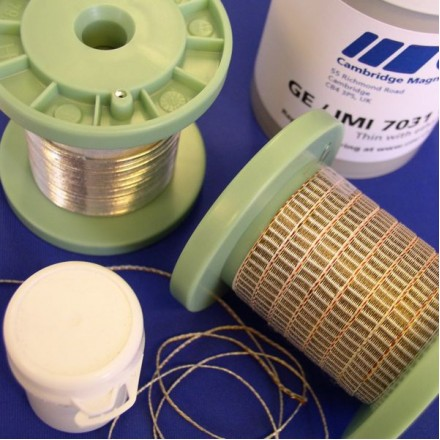
Phosphorus (Quad-Lead ™, Quad-Twist ™, DUO-TWIST ™, and Non-magnetic) are almost applicable to all low-temperature applications. The low magnetic resistance of these wires makes them an ideal choice for magnetic field use.
Physical properties
Following range: 1,223 k to 1,323 k (950 ° C to 1050 ° C)
Thermal expansion coefficient: 1.78 × 10 -5
Thermal conductivity: 293 k is 48 W/(m • k)
resistivity (annealing): 1 .15 × 10 -7 ω • m in 293 k
ratio heat: 376.4 j/(kg • k)
Stress elimination temperature (1 hour): 4 23 k to 498 k (150 ° C to 225 ° C)
Chemical ingredients: nominal 94.8%copper, 5%tin, 0.2%phosphorus
Wire insulation
Polyimide
Polyimide insulation is the most common insulation option that can be used for low -temperature wiring so far. It will run at a temperature of more than 493 k (220 ° C) for intermittent work, and has excellent chemical solvent resistance and burning resistance. Polyimide has excellent radiation resistance, so it is widely used in aerospace and high -energy physical applications. Polyimide can be removed by mechanical method during the terminal preparation. The rated voltage of 32 AWG is 3525 VAC, and the rated voltage of 36 AWG is 2525 VAC.
Polyethylene alcohol shrinking formaldehyde(Formvar ® )
Formvar® has excellent mechanical properties, such as abrasion resistance and flexibility. The film can withstand excessive extension at low temperature without rupture, making it an excellent choice for a wiring application with a small curved radius at ultra -low temperature. However, it is recommended to be careful, because Formvar® is easy to crack when contacting toluene, petroleum, and dyshaxol, so you should anneal and warm up before paint. Formvar® can be removed mechanically during the terminal preparation, with a rated voltage of 3525 VAC (32 AWG) and 2525 VAC (36 AWG).

